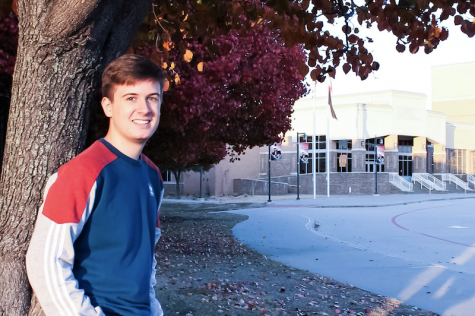Students have the power to fight plastic waste
Students for Environmental Action plans to commence their composting system. The club aims to educate students on composting and how they are contributing to it.
May 29, 2019
Walking to my car after Family Science night last week, I was shocked to see thousands of plastic forks strewn across the campus as part of the senior prank, with thousands more of tiny pieces of plastic in the road from forks that had been driven over.
While the forks were removed as much as possible by concerned students the next day, the incident got me thinking about the larger issue of single-use plastic on campus.
In our consumer-based society, it’s understandable that most people do not understand the impact of the products we use. This is because consumerism is ingrained in our minds: nobody thinks twice about cracking open a new water bottle or putting a snack in a Ziploc bag. Everyone uses plastic products to varying degrees; it’s simply unavoidable. However, many people are often unaware of the true impact of plastic.
With this being said, just because plastic is everywhere doesn’t mean students shouldn’t try to do their part in pushing for change. When plastic dominates the world, it’s easy to feel that one person’s plastic use doesn’t make a difference, but change has to start somewhere and there are plenty of ways the school can do it’s part to reduce single-use plastics. If people express their opposition to plastic products, companies will start to look for solutions.
Everyday students buy dozens, if not hundreds of plastic water bottles, in the cafeteria even though there are fully functioning water fountains just feet from the register. Through a project I made in AP Environmental Science, I learned from talking to students that this happens largely because tap water is seen as “gross”. In reality, tap water is far more regulated than bottled water, and by bringing a refillable water bottle, students can save hundreds of dollars a year.
More can also be done to educate students on what can be recycled, as well as encouraging recycling. In a world where one million water bottles are bought every minute, only 9 percent of those end up being recycled. Simply disposing of recyclable plastic in a blue bin rather than a trash can is an easy way for people to minimize the harmful impact of plastic. However the best way to minimize plastic waste is never to buy plastic waste in the first place.
The biggest potential for change remains with new students. This new generation is already reaching a new level of advocacy and messages that resonate with us, as seen in the movement to ban plastic straws leading to brands like Starbucks moving towards plastic free alternatives and Seattle banning them altogether.
We have the power to turn down plastic bags at stores, refuse plastic straws, and encourage our friends and loved ones to do the same. We have social media as a tool to spread awareness of plastic waste. Every person can make a difference and it’s up to us to finally make the change with plastic waste where other generations have come up short.







